How Do You Make a Beautiful Flower Garden? Tips for Beginners
Creating a beautiful flower garden is a rewarding way to showcase nature’s colors and scents right outside your door. Start by choosing the right mix of plants that will thrive in your climate and soil conditions. Testing and preparing your soil is essential; knowing its composition helps you grow healthy plants. Layering different flower heights and colors will add depth and visual interest.
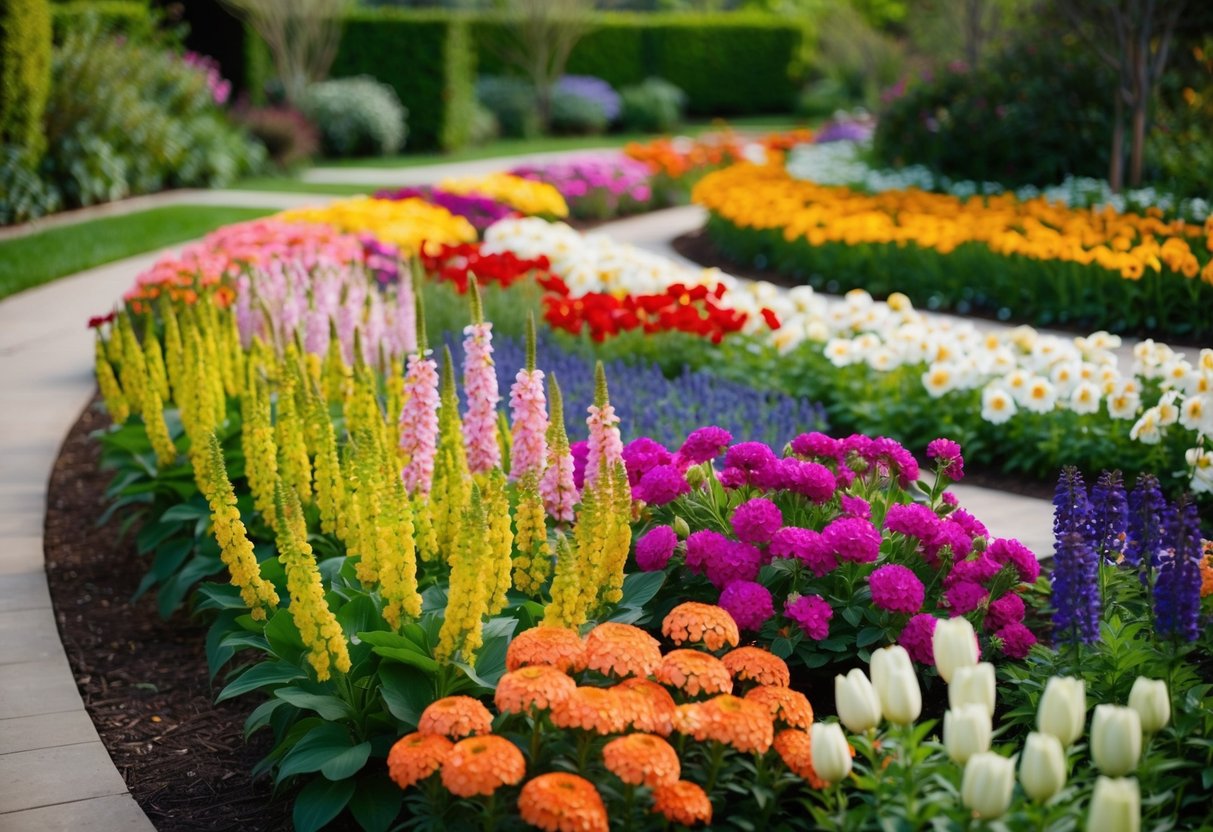
Consider adding hardscape elements like arbors or trellises to give your garden structure. These features can serve as focal points, helping to guide the layout and flow of your flower beds. Use contrasting colors or stick with a single color palette to achieve a harmonious look. Regular care, including weeding and pruning, keeps your garden looking its best throughout the seasons.
Integrate perennial plants such as chrysanthemums and hydrangeas so your garden can bloom from spring to autumn. This ensures a continuous display of vibrant colors and textures. With thoughtful planning and loving care, your flower garden can become a peaceful retreat filled with beauty and life.
Planning Your Garden Layout

Creating a beautiful flower garden begins with planning your layout. You’ll need to think about sun exposure, color choices, and where to place key elements that draw the eye. Getting these right can make your garden pleasing and inviting.
Understanding Sun Exposure
Before planting, notice how the sun moves across your garden throughout the day. Different plants need different amounts of sunlight. Some thrive in direct sunlight, while others prefer the shade. This is important for healthy plant growth.
You can find sun-loving plants, like lavender and sunflowers, at your local nursery. Shade-loving varieties include ferns and hostas. Mixing these can add depth and interest to your garden.
Consider keeping a journal to track sun exposure and note which areas get full sun, partial sun, or shade. Knowing this helps avoid placing plants in unsuitable locations, leading to better growth and vibrant blooms.
Choosing a Color Scheme
Color choice can greatly influence the look and feel of your garden. Begin by looking at a color wheel. This tool can help you select color combinations that complement or contrast beautifully.
Choose a limited palette to keep things simple. You might like soft pastels for a calming effect or bright, bold colors for drama. Combine flowers like pink peonies with white daisies or use contrasting colors, like purple and yellow.
Make sure to choose colors based on the environment and the mood you want to create. Grouping similar colors can create harmony, while contrasting colors can add excitement.
Incorporating a Focal Point
A focal point draws the eye and anchors your garden design. It can be a well-placed tree, a statue, or even a colorful flower bed. Think about adding a hardscape element like an arbor or a bench.
When placing a focal point, consider how it blends with the rest of the garden. Ensure it’s visible from different angles to maximize its impact.
Focal points can also be practical. A simple arbor covered with climbing roses can provide shade and structure while also making transitions between garden sections more interesting.
Selecting the Right Plants
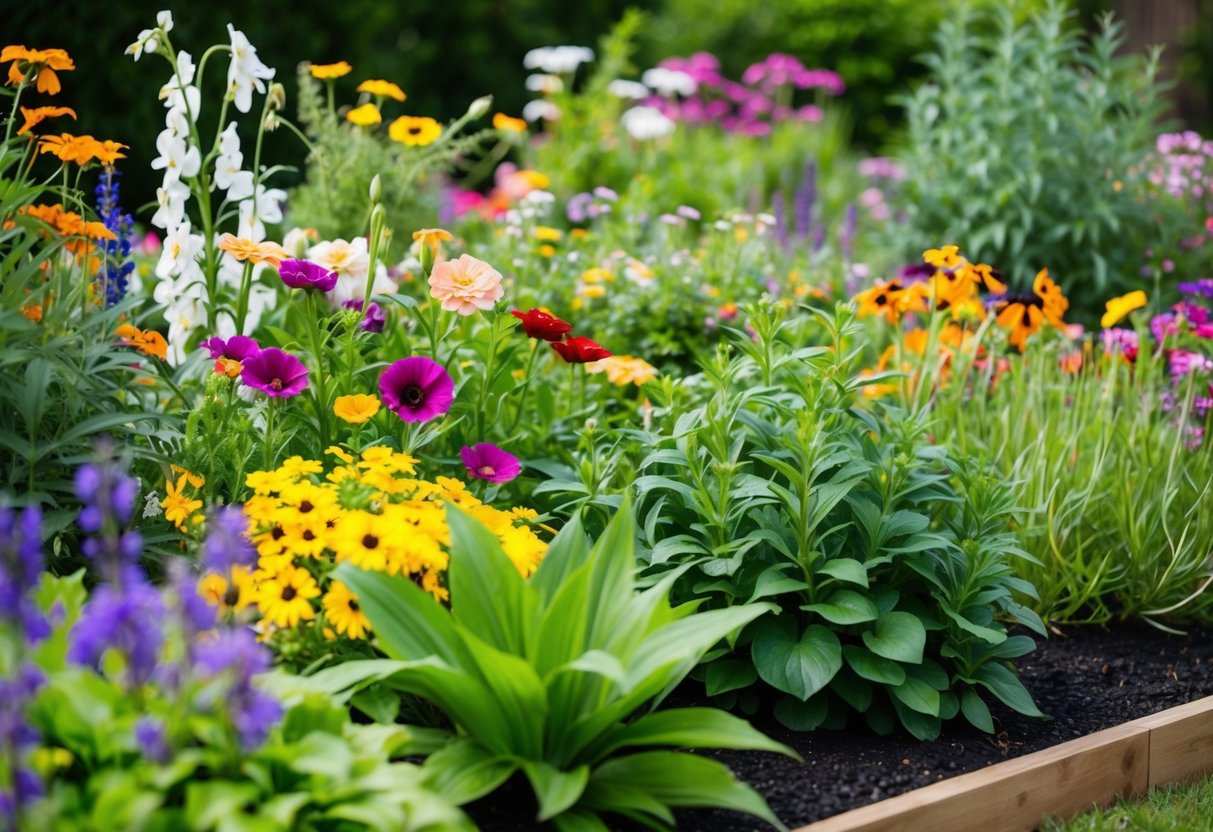
Creating a beautiful flower garden involves choosing the right plants. You need to decide between perennials and annuals, consider native plants to attract pollinators, and use ornamental grasses for texture.
Perennials vs. Annuals
When planning your garden, it’s essential to understand the difference between perennials and annuals. Perennials like asters and coneflowers return year after year. They provide long-term beauty and require less frequent planting. Perennial flowers are great for forming the backbone of your garden.
Annuals, such as cosmos and tulips, bloom for one season. They offer vibrant colors and fill gaps in your garden design. While you need to replant them each year, annuals provide flexibility in changing your garden’s look annually.
Think about including a mix of both to enjoy a variety of textures and colors throughout the growing season. Remembering the growing habits of these plant types can help create a dynamic, visually appealing garden space.
Attracting Pollinators with Native Plants
Native plants are vital for attracting pollinators like butterflies and bees to your garden. Installing native species such as milkweed and butterfly weed is a great start. These plants are adapted to local conditions and support the ecosystem by providing nectar and habitat.
Native plants require less maintenance and often perform better than non-native plants. Pollinators are crucial for pollination, which in turn helps your garden flourish.
Consider adding native flowers like coneflowers and asters to entice these helpful creatures. They not only enhance your garden’s beauty but also contribute positively to the environment.
Adding Texture with Ornamental Grasses
Incorporating ornamental grasses into your garden can add a unique texture and dynamic movement. Grasses like fountain grass and feather reed grass offer height, texture, and different shades of green, which can beautifully contrast with colorful flowers.
These grasses require minimal care and thrive in various conditions, making them an excellent addition to almost any garden. They fit well with perennial flowers like chrysanthemums to create a layered look.
Moreover, ornamental grasses can act as a backdrop, giving your garden depth. By choosing varieties that suit your landscape, you add interest and create a stunning visual display.
Preparing the Soil
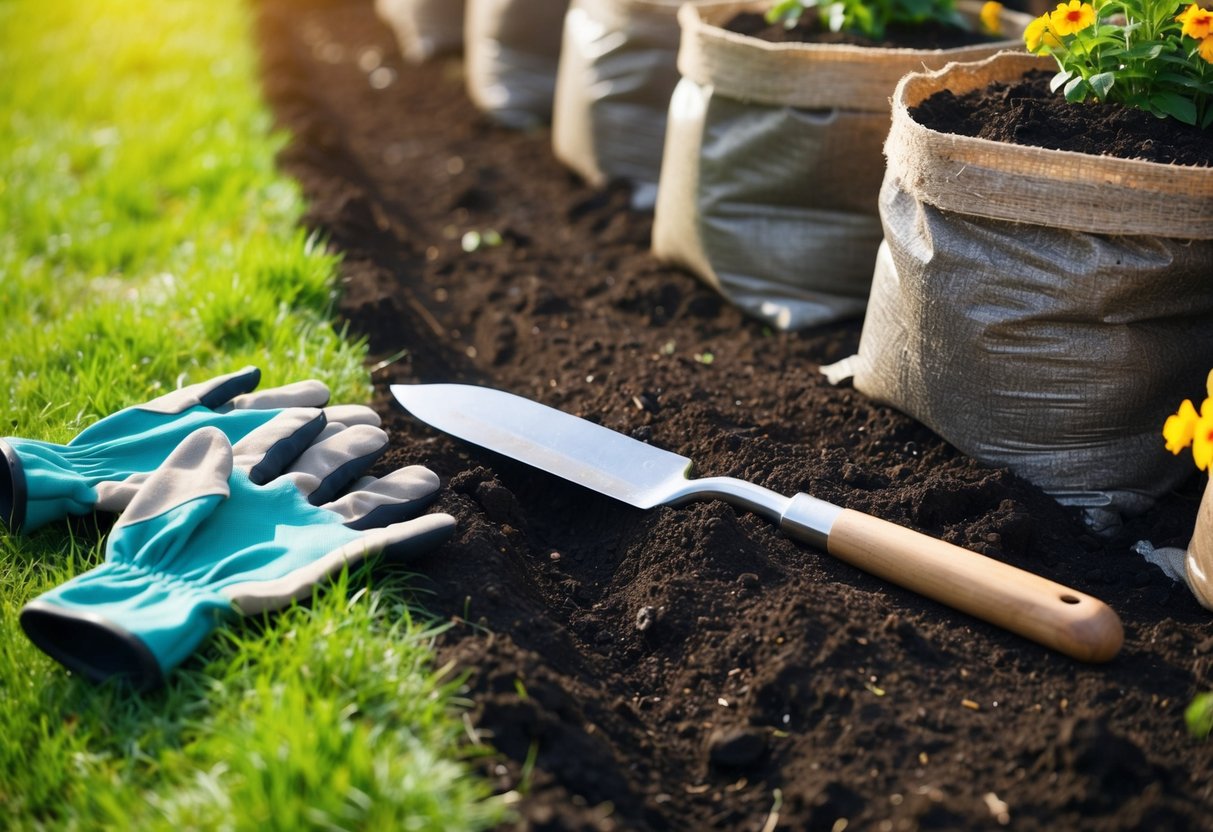
To create a beautiful flower garden, getting the soil ready is crucial. You need to know what your soil needs, enhance it with the right materials, and consider using raised beds for better results.
Performing a Soil Test
Testing the soil helps you learn about its composition, pH levels, and nutrient content. You can use a simple home kit or send a sample to a local extension service. Knowing whether your soil is clay, sandy, or loamy helps you understand how it holds water and nutrients.
By identifying deficiencies, you’ll know if you need to add fertilizers or other amendments. Test results guide choices on improving the soil’s fertility and drainage, essential for healthy plant growth.
Enhancing Soil with Compost and Mulch
Adding compost enriches the soil with nutrients and helps improve water retention. Compost can be made from kitchen scraps, leaves, and other organic materials. Spread a layer of compost over your planting area and mix it into the topsoil.
Mulch, on the other hand, keeps moisture in and regulates soil temperature. Apply it around plants to suppress weeds and protect soil structure. Use options like bark chips or straw for effective mulching.
Building Raised Garden Beds
Raised garden beds offer several advantages for flower gardening. They improve drainage, which is essential if your yard has heavy clay soil. Raised beds can also be filled with a customized soil mix, providing the perfect environment for plant roots.
Construct them using materials like wood or stone in any size that fits your garden space. The extra height makes planting and maintenance easier on your back. You can grow a wide variety of flowers in raised beds, ensuring they thrive in well-prepared soil.
Planting and Care
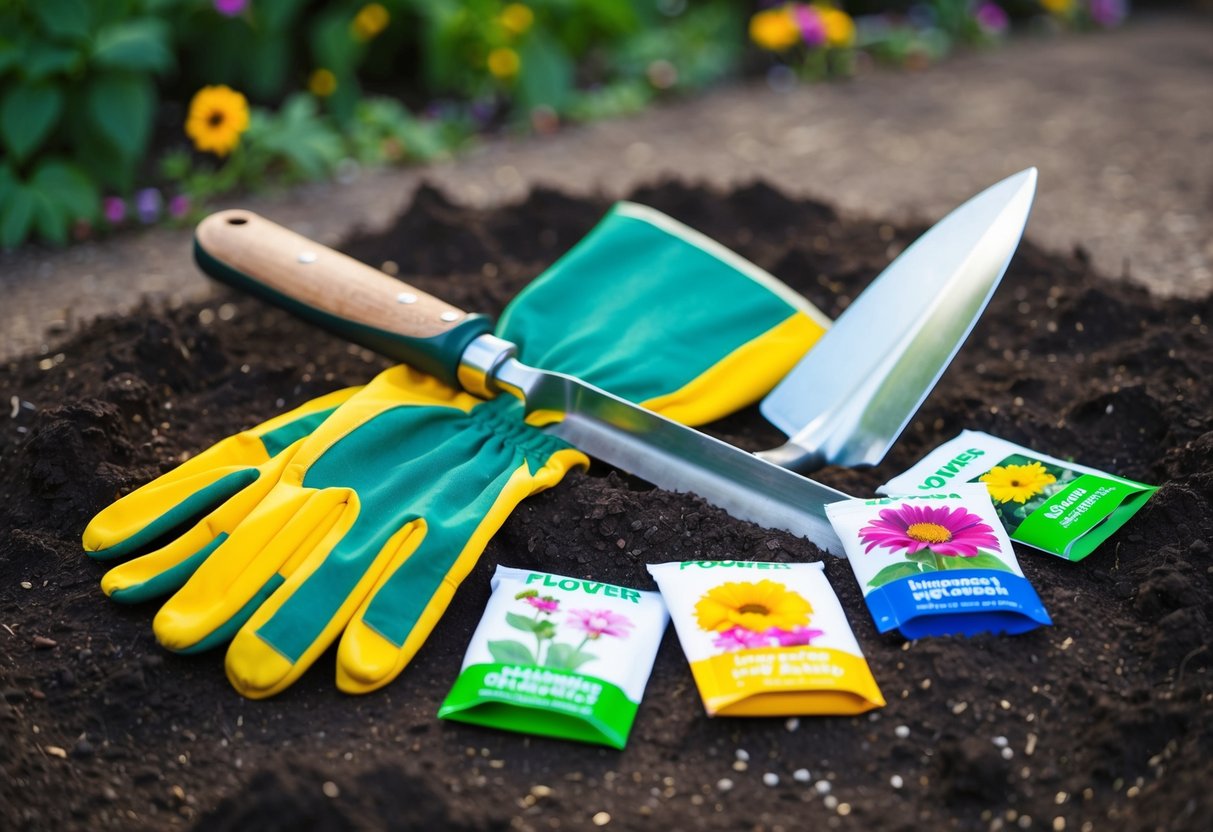
Creating a beautiful flower garden involves understanding how to properly plant and care for your flowers. This involves using the right techniques for planting, knowing how much water your plants need, and understanding how to fertilize for optimal growth.
Proper Planting Techniques
When planting, start by choosing the right location with good soil and the right amount of sunlight. Test your soil to know its composition. Add compost to enhance fertility if needed. Dig holes that are two to three times wider than the roots of the plants. Gently remove each plant from its container to minimize root damage. Place it in the hole, making sure the top of the root ball is level with the soil surface.
Before covering the roots with soil, lightly pack the soil around them to eliminate air pockets. Water your plants immediately after planting to help them settle and adjust. Mulch around the plants to retain moisture and suppress weeds. This mulching step is especially useful during hot summer months when water evaporates quickly.
Watering and Rainfall Considerations
Understanding the water needs of your garden is essential. Most flowers need about an inch of water per week, which can come from rainfall or supplemental watering. Use a rain gauge to keep track of rainfall in your area. In hot weather, you may need to water more frequently to prevent the soil from drying out.
When watering, do it early in the morning or late in the evening. This helps reduce evaporation and allows plants to absorb water better. Avoid overhead watering during peak sunlight hours to prevent leaf scorch and disease. Consider drip irrigation systems, which provide consistent moisture directly to the roots and are efficient in water use.
Fertilizing and Deadheading for Growth
Fertilizers supply essential nutrients for your plants. Select a balanced, slow-release fertilizer and follow the instructions for your specific plant types. Feeding your plants every few weeks can promote healthy growth and abundant summer blooms. Be careful not to over-fertilize, as this can harm the plants.
Deadheading, or removing spent flowers, encourages plants to produce new blooms instead of seeds. Snip off wilted blooms with a sharp tool close to the next growth node. Regular deadheading keeps your garden looking neat and extends the blooming period, keeping your flower garden vibrant and lively throughout the growing season.
Expanding Garden Features
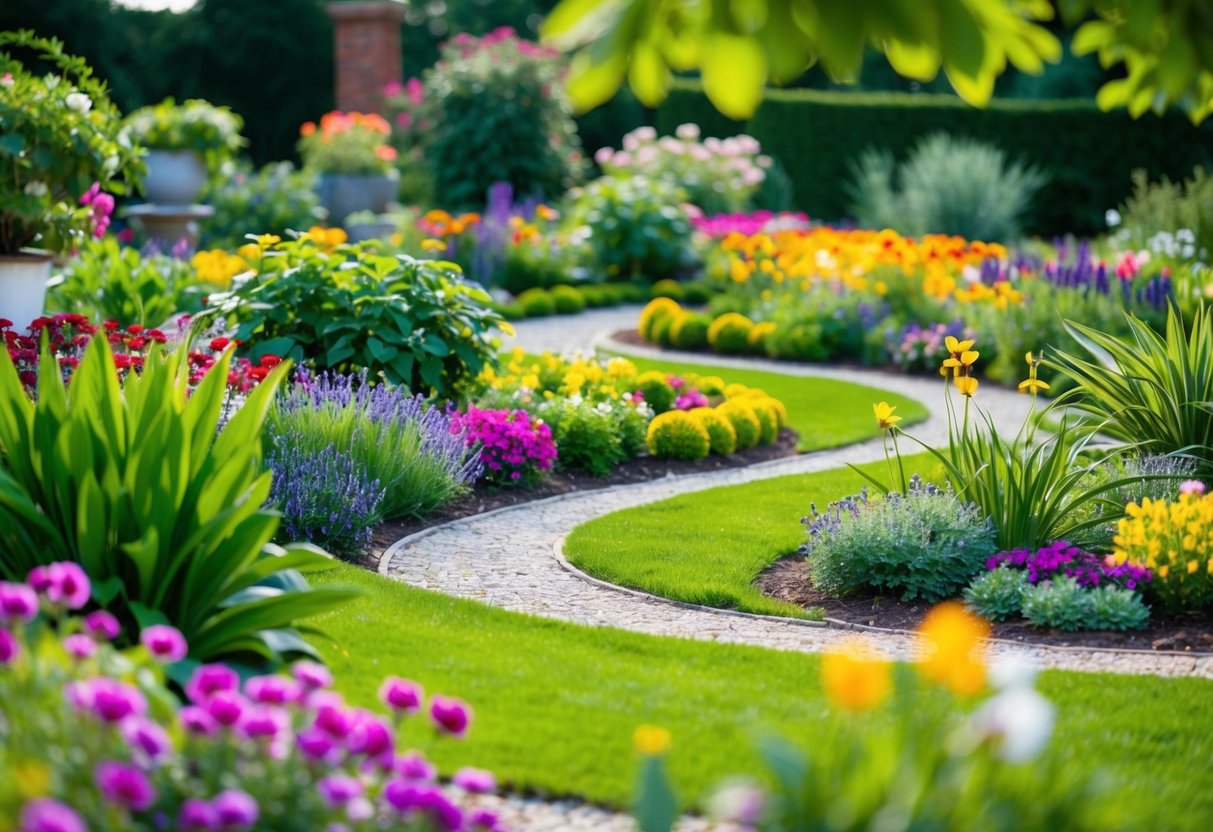
To create a truly captivating flower garden, think about adding diverse elements like a cutting garden, a section with edible plants, and vibrant vines. These additions bring variety, texture, and practicality to your garden space.
Incorporating a Cutting Garden
A cutting garden is an area where you can grow flowers specifically for bouquets. Consider plants that have long stems and a long blooming season. Popular choices include zinnias, sunflowers, and snapdragons.
To ensure a continuous display of blooms, plant flowers with varying seasons of color. Maintaining a steady tiered garden structure can help each plant get enough sunlight and space to flourish. Think about flowering plants with a mix of colors and shapes to enhance your bouquets. Always refresh your cutting garden with seasonal flowers to keep it vibrant.
Creating an Edible Garden Section
An edible garden section adds beauty and function. You can incorporate plants like herbs, edible flowers, and vegetables that complement the rest of your flower garden. Popular choices for an edible garden include nasturtiums, rosemary, and kale.
Ensure that your edible plants receive the right amount of light, water, and nutrients for healthy growth. Planting in layers, often known as a tiered garden, can make the most of your space while adding visual depth. This section allows you to enjoy fresh ingredients directly from your garden, adding flavor to your meals.
Adding Vines for Vertical Interest
Vines are perfect for adding vertical interest to your garden. They can be used on trellises, fences, or walls to draw the eye upward, creating a sense of space and structure. Choose species like clematis, morning glories, or climbing roses for a dramatic effect.
These plants not only add height but can also provide seasonal color and an array of textures. Vines are ideal for small gardens, as they don’t take much ground space. They offer a beautiful backdrop to your garden and can be especially striking when mixed with contrasting flower types and vibrant colors.







